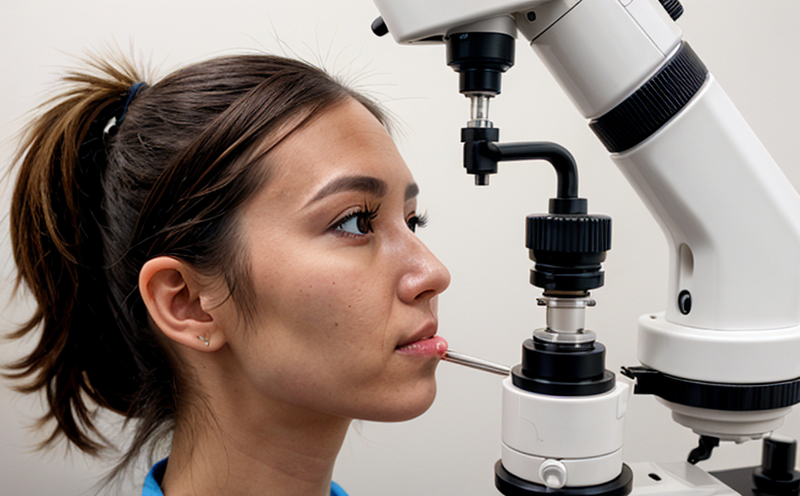ISO 10940 Fundus Camera Testing
The ISO 10940 standard pertains to the testing and evaluation of fundus cameras used in medical diagnostics. Fundus cameras are essential tools for capturing detailed images of the retina, optic nerve, and other structures at the back of the eye. This test ensures that these devices meet safety standards as defined by international regulations.
The ISO 10940 standard is part of a broader set of guidelines aimed at ensuring the safety and effectiveness of medical devices used in clinical settings. Compliance with this standard is crucial for manufacturers aiming to ensure their products meet regulatory requirements before entering the market.
To perform ISO 10940 testing, specific apparatuses are required. These include a fundus camera capable of capturing high-quality images under controlled conditions and a standardized lighting setup designed to minimize glare and enhance visibility during imaging. The test involves multiple steps that ensure both the mechanical integrity and optical performance of the device.
During the initial phase, the mechanical stability and alignment of the fundus camera are checked using precision tools. This ensures that the camera remains in a fixed position throughout all tests, minimizing potential sources of error. Optical parameters such as resolution, contrast, and color fidelity are then evaluated by comparing captured images against established standards.
One critical aspect is evaluating the camera’s ability to capture clear images under various conditions, including low light levels and different pupil sizes. This helps determine whether the device can provide accurate diagnostic information in real-world scenarios. Additionally, tests assess the reliability of data transmission between the camera and associated software systems.
The testing process also includes evaluating the ergonomics of the equipment to ensure it is user-friendly for healthcare professionals who will be performing examinations. This involves assessing factors like ease of operation, comfort during long hours of use, and accessibility features that enhance usability.
Once all tests are completed, detailed reports are generated summarizing findings from each test parameter evaluated. These reports serve as evidence demonstrating compliance with ISO 10940 standards, which can be shared with regulatory bodies or potential clients during sales presentations.
The importance of adhering to these rigorous testing protocols cannot be overstated given the critical role fundus cameras play in diagnosing various ocular conditions. By ensuring that every device meets stringent quality criteria before reaching end users, this process contributes significantly towards enhancing patient care and safety standards globally.
Scope and Methodology
The ISO 10940 Fundus Camera Testing encompasses a comprehensive evaluation of the mechanical integrity, optical performance, and operational reliability of fundus cameras. This includes assessing various parameters such as resolution, contrast, color fidelity, and data transmission accuracy.
- Verification of mechanical stability
- Evaluation of optical quality indicators
- Assessment of ergonomic design elements
- Detailed documentation and reporting
The testing procedure begins with an initial setup where the camera is calibrated according to manufacturer specifications. Subsequently, a series of images are taken under controlled conditions using standardized procedures to ensure consistency across all evaluations.
After capturing these images, they undergo rigorous analysis by our experienced technicians who compare results against internationally recognized standards. Any deviations from expected values are carefully documented along with recommendations for improvement where necessary.





